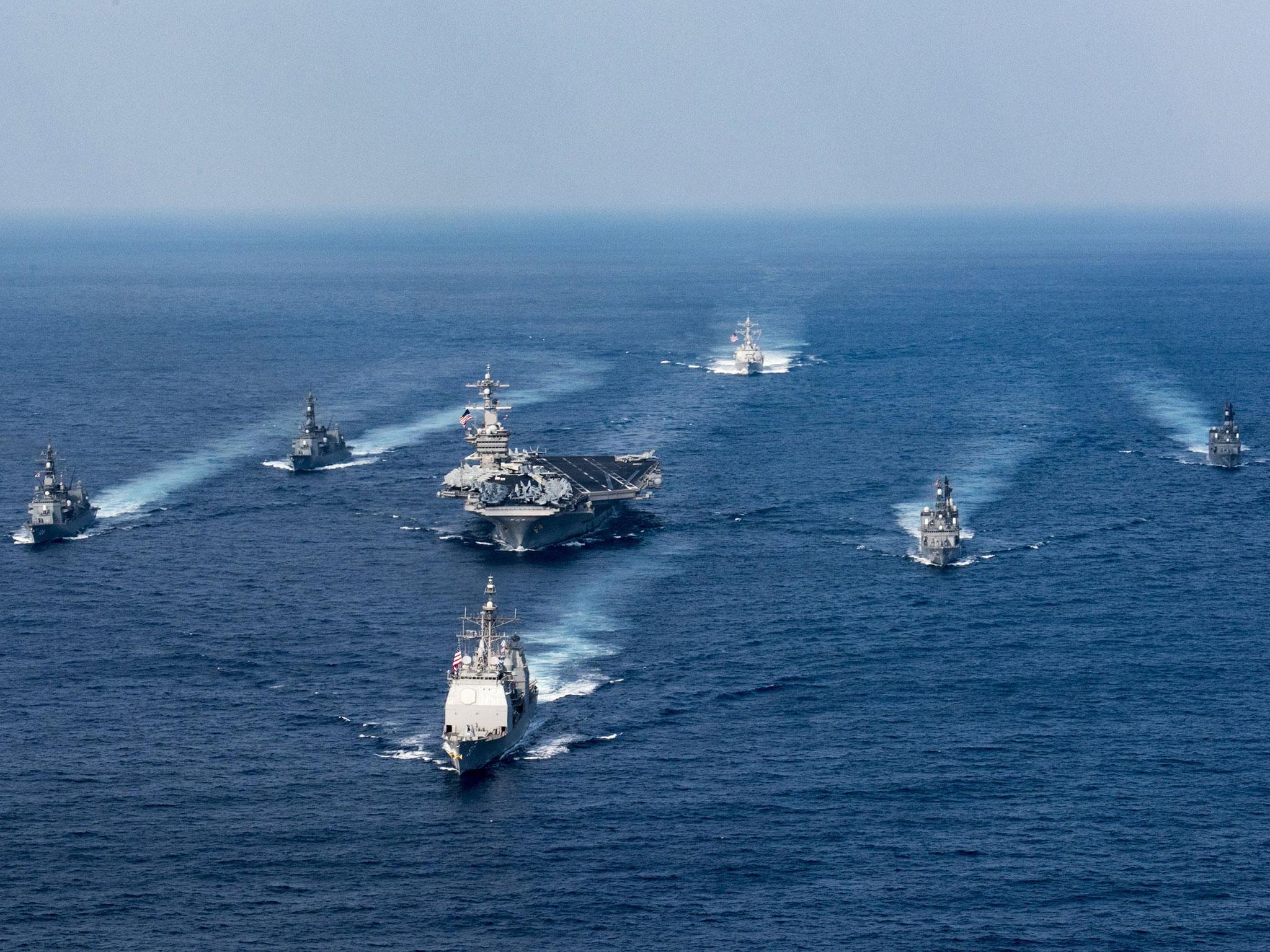China and Russia shadow US 'armada' including aircraft carrier heading to North Korea
Japanese media says Beijing and Moscow are deploying spy vessels to monitor the USS Carl Vinson

Your support helps us to tell the story
From reproductive rights to climate change to Big Tech, The Independent is on the ground when the story is developing. Whether it's investigating the financials of Elon Musk's pro-Trump PAC or producing our latest documentary, 'The A Word', which shines a light on the American women fighting for reproductive rights, we know how important it is to parse out the facts from the messaging.
At such a critical moment in US history, we need reporters on the ground. Your donation allows us to keep sending journalists to speak to both sides of the story.
The Independent is trusted by Americans across the entire political spectrum. And unlike many other quality news outlets, we choose not to lock Americans out of our reporting and analysis with paywalls. We believe quality journalism should be available to everyone, paid for by those who can afford it.
Your support makes all the difference.China and Russia have dispatched spy vessels to shadow a fleet including a US aircraft carrier heading to North Korean waters.
Beijing has sought Moscow’s help in averting the mounting crisis over Pyongyang’s repeated nuclear tests.
US President Donald Trump has sent a navy group led by the aircraft carrier Carl Vinson into the region as a signal to the secretive dictatorship about its nuclear programme.
North Korea has defied repeated economic sanctions and international pressure over its nuclear regime, which saw it carry out two tests in 2016 and one so far this year, and has vowed a “merciless response” to any US provocation.
Mr Trump described the force as an “armada” and said the submarines being sent were “far more powerful than the aircraft carrier”.
Japanese newspaper Yomiuri Shimbun cited “multiple sources” within their country’s government which said China and Russia had dispatched vessels to chase the USS Carl Vinson.
China is widely seen as the only country that can rein in Pyongyang but has traditionally refused to do so in order to prevent the regime collapsing and a subsequent refugee crisis on its border.
In recent months it has demonstrated signs that it wants to help the international community force North Korea to back down – in February it banned all coal imports from the country and last week deployed 150,000 troops to the border.
Mr Trump’s National Security Advisor Lieutenant General HR McMaster said “all options are on the table” including military intervention when it comes to North Korea.
Beijing has urged both countries to avoid an “irreversible route” to war and warned that conflict could break out “at any moment”.
Chinese Foreign Minister Wang Yi said: “If a war occurs, the result is a situation in which everybody loses and there can be no winner. It is not the one who espouses harsher rhetoric or raises a bigger fist that will win.”
The Korean peninsula has been divided since the end of the Second World War when the USSR and US jointly administered the north and south respectively after taking over following the end of the Japanese occupation.
When forces under North Korean leader Kim il-Sung invaded the south in 1950, the newly formed UN, led by the US, intervened to stop the south falling to Kim’s version of nationalistic communism.
After three years of fighting, the two sides agreed an armistice along the 38th parallel which divided the country in two.
Today, both North and South Korea remain technically at war and the uneasy ceasefire between the two nations is occasionally interrupted by assassination attempts, rows over military exercises and border skirmishes.
Join our commenting forum
Join thought-provoking conversations, follow other Independent readers and see their replies
Comments